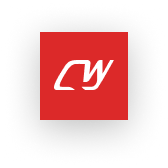Car Coolant Price Breakdown: It's Not Just About the Label
Published On 11/7/2024, 4:17:25 pm Author Nitesh YadavCar coolant, the unsung hero of your engine, plays a vital role in preventing overheating and ensuring smooth operation. This guide will help you understand the factors influencing car coolant cost and give you an idea of what to expect.

The price of car coolant depends on several factors, not just the brand name. There are two main types – pre-mixed coolant (ready to use) and coolant concentrate (requires dilution with water). Pre-mixed coolants are generally more expensive due to the convenience factor.
Coolants come in different technologies, such as silicate, organic acid technology (OAT), and hybrid organic acid technology (HOAT). OAT and HOAT coolants offer longer lifespans and better corrosion protection, often justifying a higher price tag.
The Price Range: A Coolant for Every Budget
Budget-Friendly (Under ₹300 per liter): Coolant concentrates from some lesser-known brands or basic silicate-based pre-mixed coolants fall into this category.
Mid-Range (₹300-₹500 per liter): This range includes popular brands offering OAT or HOAT technology coolants in both concentrate and pre-mixed forms.
Premium (Above ₹500 per liter): High-performance coolants with extended lifespans and advanced corrosion protection from established brands often fall into this category.
While a lower price might be tempting, remember that coolant is an investment in your engine's health. Opting for a cheap, low-quality coolant could lead to faster degradation, potential corrosion issues, and ultimately, a higher repair bill down the road.
How coolant works
Car coolant, that seemingly simple liquid, plays a critical role in your engine's health. It acts like a superhero, constantly battling heat to keep your engine running smoothly. But how exactly does this unsung hero work its magic?
The combustion process within your engine generates a tremendous amount of heat. If this heat isn't managed effectively, it can lead to overheating, causing serious engine damage. This is where coolant comes in.
Car coolant is a mixture of water, antifreeze, and corrosion inhibitors. The antifreeze, typically made from ethylene glycol or propylene glycol, lowers the coolant's freezing point and raises its boiling point. This allows the coolant to circulate effectively even in extreme temperatures. As the engine runs, coolant circulates through passages surrounding the engine cylinders and head. This allows the coolant to absorb heat directly from the engine block.
A water pump constantly pushes the heated coolant through the engine and into the radiator.
The radiator is essentially a large heat exchanger. As the hot coolant flows through the radiator's thin tubes, air flowing through the radiator fins absorbs the heat. A fan, often electrically controlled, helps draw more air through the radiator for efficient heat transfer. The cooled coolant then travels back to the engine block, ready to absorb more heat and repeat the cycle.
Antifreeze: More Than Just Winter Protection
While preventing freezing is crucial, antifreeze offers other benefits:
Raising Boiling Point: This ensures the coolant doesn't boil over at high operating temperatures, preventing a pressure build-up that could damage the engine.
Corrosion Protection: The added inhibitors in coolant help prevent rust and corrosion within the engine's cooling system.
















